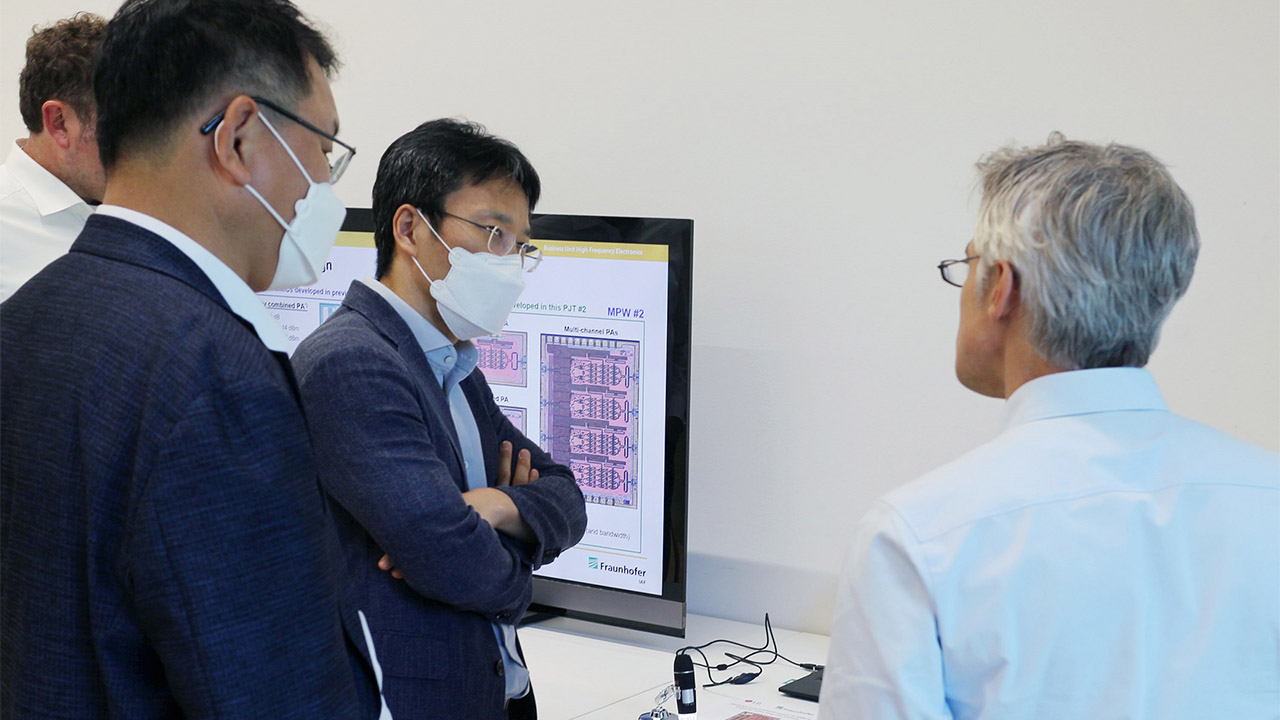LG Successfully Tests 6G Data Transmission
Forget 5G, 6G is only seven years away
LG has announced the successful testing of 6G wireless data transmission tech it claims could see wireless internet speeds in excess of 1TBps. The demonstration, which took place at the Fraunhofer Heinrich Hertz Institute in Berlin, Germany, used a frequency range of 155 to 175 GHz, much higher than the 24.25 to 52.6 GHz that make up the top end of the 5G spectrum.

The data transmission - the press release doesn’t specify what speed it actually achieved - took place over a distance of 320 meters, tripling the record of 100 m set in August last year using similar technology. This distance beats the reference design for urban cell coverage, which places base stations 250 m apart. For comparison, 5G wavelengths have a range of about 1,000 m, and 4G can manage around 10 miles.
As we’ve learned with Wi-Fi (currently testing at 5Gbps), the higher your transmission frequency, the shorter the range, so signal amplification that doesn’t dissolve into electronic noise is essential. The test used a multi-channel power amplifier with an output of more than 20 dBm, beating the previous trial by 5 dBm, and a low-noise amplifier on the receiving end. These technologies have been built into LG’s latest 6G modules, which have been designed to be easy for future fabrication plants to produce.
With 5G still not fully available outside major cities, it may seem premature to be testing its replacement, and discussions on 6G standardization aren’t expected to begin until 2025, with a commercial release around 2029. Much research into the area is coming from China. Scientists from the Nanyang Technological University in Singapore and Osaka University in Japan announced they had created a chip capable of producing terahertz waves in 2020, while earlier this year Purple Mountain Laboratories of China claimed a data rate of 206.25 gigabits per second in a lab environment within the terahertz frequency band.
"With the success of our latest demonstration, we are one step closer to realizing 6G speeds of 1 terabit per second in both indoor and outdoor urban areas," said Dr. Kim Byoung-hoon, CTO and executive vice president of LG Electronics. "LG will continue to cooperate with research institutes and industry innovators to further solidify its leadership in 6G technology. We expect 6G to be a major driver of future business and new user experiences, and there is no place we’d rather be than at the forefront of its development."
Get Tom's Hardware's best news and in-depth reviews, straight to your inbox.

Ian Evenden is a UK-based news writer for Tom’s Hardware US. He’ll write about anything, but stories about Raspberry Pi and DIY robots seem to find their way to him.
-
hotaru251 this is getting dumb tbh.Reply
5g already has a god awful range unless ur legit in line of sight of a tower w/o anything between.
6g will be even worse. -
UOvAZPHDogsView: https://youtu.be/UOvAZPHDogsReply
6g will be much worse. It will even interfere with NASA and other organizations who use such frequencies for measurements.
they both interfere significantly with our ability to predict weather forecast which is pretty critical -
thekekscernist I'll take 'Ionizing Radiation' for 500, AlexReply
Don't worry though, folks. I'm sure a definitely-not-sponsored study out of a big university with an endowment will tell us there's definitely nothing to worry about -
TJ Hooker Reply
100-200 GHz is nowhere near ionizing. And by nowhere near I mean the frequency would need to be millions of 10K+ times higher to be ionizing.thekekscernist said:I'll take 'Ionizing Radiation' for 500, Alex
Don't worry though, folks. I'm sure a definitely-not-sponsored study out of a big university with an endowment will tell us there's definitely nothing to worry about
The frequencies being discussed in this article are still less than one thousandth the frequency of the lower edge of the visible spectrum.
Edit: As an aside, I'm not sure why LG describe it as THz when the frequencies in question are 100-200 GHz. The ITU definition of "Terahertz radiation" starts at 300 GHz. Maybe it's a 6G vocabulary thing. -
derekullo Reply
https://artofproblemsolving.com/wiki/index.php/Electromagnetic_spectrumthekekscernist said:I'll take 'Ionizing Radiation' for 500, Alex
Don't worry though, folks. I'm sure a definitely-not-sponsored study out of a big university with an endowment will tell us there's definitely nothing to worry about
Radiation doesn't become ionizing until well into the UV range.
If you want to be even more paranoid, blue light that you can see looking up at the sky on a clear day has a frequency of about 750000 Gigahertz or a 2500 times higher frequency than 6G !!!!!!!
Fortunately an aluminum foil hat can block blue light and 6G radiation! -
Reply
Yeah and that smoking cigarette is good for you. They actually did that in the 60s so yeah this isn’t surprising.thekekscernist said:I'll take 'Ionizing Radiation' for 500, Alex
Don't worry though, folks. I'm sure a definitely-not-sponsored study out of a big university with an endowment will tell us there's definitely nothing to worry about -
Reecechad976 Watch all the crazy conspiracy theorists come out of their hidey holes to embarrass themselves again 😂😂Reply